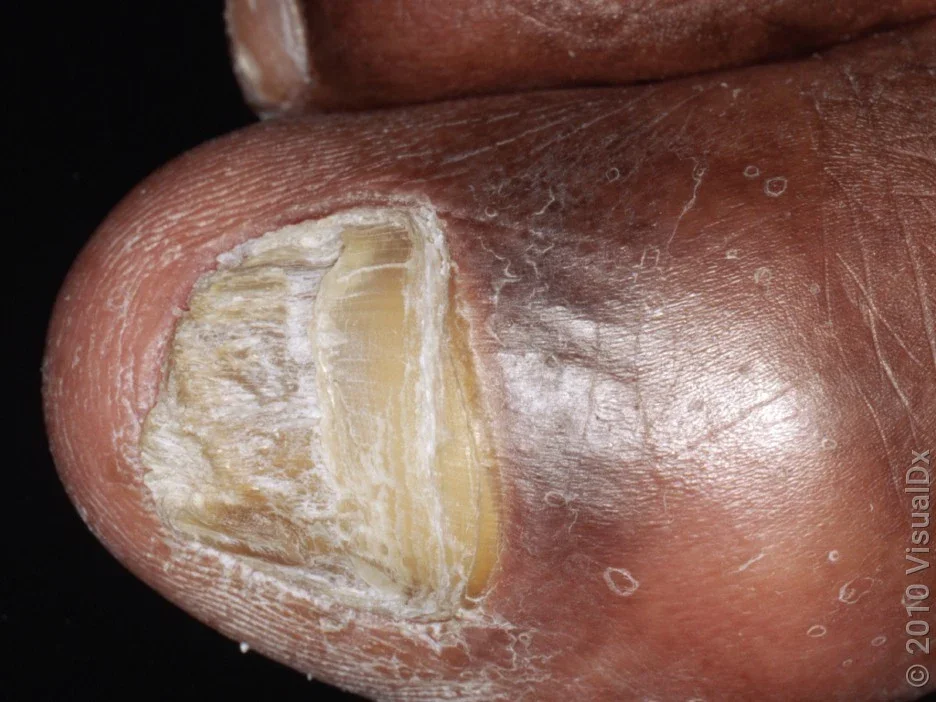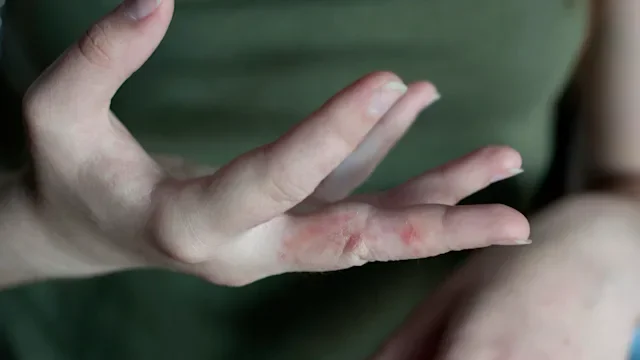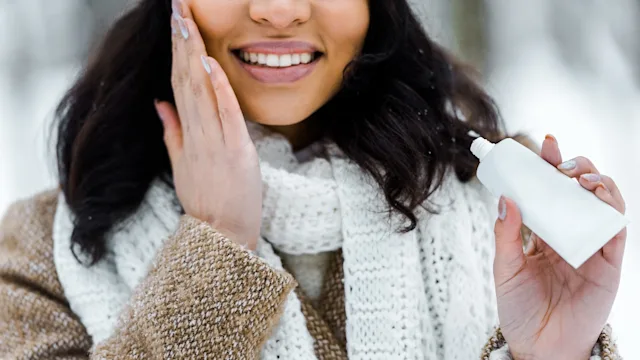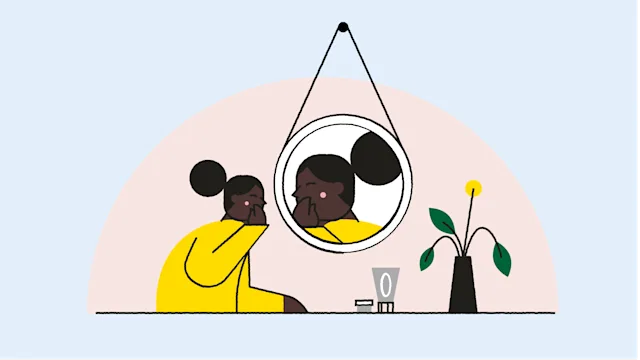Key takeaways:
Nail polishes and removers, medications, hair dyes, and cigarettes can turn nails yellow.
Some medical conditions can also turn nails yellow, like vitamin deficiencies, thyroid and kidney conditions. Nail fungus can also turn nails yellow.
Finding the cause of your yellow nails will help you find the right treatment to get your nails back to their natural color.
Many people experience nail discoloration, like yellow nails, which are one of the most common nail color changes. If you’ve recently noticed a change in your nail color, you might be wondering what’s going on.
Yellow nails aren’t usually a sign of a health problem. And there are ways to get your nails back to their natural color — and ways to keep your nails from turning yellow in the first place. Finding the cause of your nail discoloration is the first step to getting your nails back to baseline. Let’s take a look at nine reasons your nails might be turning yellow.
1. Nail fungus
Nail fungus (onychomycosis) develops when fungi invade one (or more) of your nails. These fungi eat keratin, a protein found in nails, skin, and hair. Nail fungus usually makes the top part of your nail turn yellow first. But as the infection gets worse, your entire nail can change color and become thick and cracked.
Search and compare options
Nail fungus is very common and very easy to pick up. The fungus can live on other parts of the skin or hair, causing problems like jock itch, ringworm, or athlete’s foot. These conditions can all cause skin itching. When people scratch the area, the fungus gets under the nails and causes an infection.
Nail fungus can also live on objects. If these objects touch your nails, the fungus can pass from the object and onto your nail. Manicure tools, nail clippers, and nail scissors are common objects that can harbor nail fungus.


2. Nail polish
Nail polish can stain your nails yellow. You may notice the discoloration is more obvious on the top half of your nails. Chemicals and dyes in nail polish can bond to the keratin in your nails and lead to discoloration.
The longer you wear the nail polish, the more time the ingredients have to bond to your nails. That’s why people typically notice yellow nails after wearing nail polish for a long time or having back-to-back manicures. The discoloration isn’t permanent, but the yellow color will hang around until your nails grow out.
Darker colors and reds are more likely to stain your nails than lighter nail polish colors because these shades contain more dye. Some polishes contain higher levels of chemicals like formaldehyde. These chemicals keep the nail polish fresh and usable. But over time they can also damage your nail and make it more brittle. Brittle nails are more likely to take on a yellow hue.
3. Nail trauma
Nail trauma and nail injuries can lead to nail splitting and yellow discoloration. The nail is made up of many layers of keratin pressed together. When your nail gets injured, these layers start to separate. At first, this may not be obvious, and you may notice only mild yellow discoloration. But over time, your nails can get weaker and you can develop other nail changes, such as:
Grooves
Ridges
Brittleness
Crumbling
What nails say about your health: From changes in color or texture, common nail changes say something about your health. Learn more here, with pictures.
Nail signs of vitamin deficiency: Learn how to spot early signs of vitamin deficiencies in your nails.
What causes nail splitting? Read the GoodRx guide about what causes nail splitting and what you can do about it (with photos).
Nail splitting can happen with mild trauma like the kind you get from biting your nails. If your nails are often wet, that’s also considered mild trauma and can lead to splitting. If your job requires frequent handwashing or getting your hands wet, this can lead to nail splitting and yellow nails.
4. Dyes
It’s not just the dyes in nail polish that can stain your nails yellow. Dyes in other products can also cause nail color changes. Hair dye can bond to the keratin in your nails and skin, and cause a yellow discoloration. While the yellow hue might wash off your skin in a few days, the dye bonded to your nails will take much longer to go away.
Another common culprit is self-tanner. The dyes in self-tanner are supposed to bond to the keratin in your skin so that you can get that sun-kissed glow. But that dye won’t discriminate between the keratin in your skin and nails. It can stick to your nails, too, causing a yellow color.
Read more like this
Explore these related articles, suggested for readers like you.
5. Nicotine
Nicotine and tar in cigarettes can stain your nails yellow. It can stain the skin of your fingers yellow, too. The staining can start off as a light yellow, but it can deepen over time if you keep smoking. It also stains your entire nail, not just the top portion.
6. Age
Your nails and skin change as you get older. Nails tend to grow slower and become thicker and more brittle. They also change in color. Some people notice that their nails take on a more yellow hue. For others, nails may look more gray or dull as they get older.
7. Vitamin deficiencies
Your skin, hair, and nails need enough vitamins to produce strong, healthy keratin. Low levels of certain vitamins, like zinc or B12, can lead to weak, yellow-colored nails. Some people opt to take vitamins that specifically target hair and nail health. But you don’t always need to take these vitamins to make sure your body is getting what it needs. Focusing on a wide range of whole foods can help you reach your vitamin goals.
8. Health conditions
Some health conditions can cause nail discoloration, and getting the right treatment can often help your nails regain their natural color. Examples of some conditions that can discolor nails include:
Keep in mind that certain medical treatments can also cause nail discoloration. Dialysis is a medical treatment for kidney disease, and it can lead to many types of nail changes, including yellow discoloration. Crushing and cutting certain medications can also release dyes and byproducts that can bond to the keratin in your nails and cause discoloration.
9. Yellow nail syndrome
Yellow nail syndrome is a rare medical condition that makes all of your nails turn yellow. People usually have other symptoms, including lung problems and swelling (lymphedema) usually in their legs. But most people notice other, more serious symptoms, before nail changes. This, added to the fact it’s so rare, makes it an unlikely cause of most people’s yellow nails.
What is the best treatment for yellow nails?
The best way to treat your yellow nails depends on what’s causing the discoloration.
Dye: Take a break from polish and be patient
If dyes are to blame, you’ll have to wait until your nails grow out to get rid of the yellow color. There’s no easy way to get rid of that dye or return your nails to their normal color fast. You can consider taking a break from nail polish until your nails are back to normal so they have a chance to recover.
Make sure to use (or ask for) a base coat with all future manicures. This can help lower the risk of dye bonding to your keratin, though it isn’t guaranteed. You can also opt for lighter colors, which have less dye and are less likely to cause a yellow color.
Always wear gloves when dying your hair or applying self-tanner. This will keep dyes off your skin and nails so you don’t end up with yellow nails, hands, or fingers.
Smoking: Try to quit
If you smoke, consider quitting. Your nails will grow back to their normal color if you stop smoking. There are treatments that can help with smoking cessation. Talk with a healthcare professional about your options.
Nail fungus: Treat the infection
Nail fungus infections can be treated with topical medications and prescription medications that you take by mouth.
“You can try an over-the-counter antifungal nail treatment as a first effort, but it’s best to consult a healthcare provider to determine what your options are for treatment of nail discoloration if that doesn’t work,” said Tracy M. Reed, doctor of podiatric medicine.
It’s also a good idea to take extra precautions when you get a manicure. Fungus can live on manicure tools. You can ask your nail technician if tools are sterilized between customers or bring your own set for extra peace of mind.
Nail trauma: Protect your nails
If what’s causing your discoloration is nail trauma, wear gloves while you’re working. Whether it’s a job, hobby, or household chores, any activity that keeps your nails wet can lead to nail discoloration. Wearing gloves protects your nails and the skin on your hands, too.
When should you see a healthcare professional for yellow nails?
Most of the time, yellow nails aren’t a sign of a medical problem. But in some situations you should see a healthcare professional to make sure there isn’t a medical reason for your yellow nails.
If you’ve been avoiding dyes, wet hands, and nicotine, see if your nails grow back in with their normal color. You should start to notice the yellow color on just the top part of your nails. But if you notice that your nails are growing in with a yellow tinge, it’s time to talk with a healthcare professional.
It’s also a good idea to see a healthcare professional if you notice other symptoms besides yellow nails. This can include other nail or skin changes or more general symptoms like fatigue or trouble breathing.
Frequently asked questions
HIV doesn’t directly cause yellow nails. But, people living with HIV are more likely to have nail fungal infections (called onychomycosis), which can cause yellow nails. This is because HIV weakens the immune system, making fungal infections more likely.
The skin around the nails can turn yellow for many of the same reasons your nails turn yellow. For example, this can happen from:
Infections (like onychomycosis or paronychia)
Nicotine exposure from smoking
Dyes (like from hair dye or self-tanner)
Conditions that affect the skin and nails (like psoriasis)
It’s not uncommon for nails to turn yellow after getting acrylics. This can happen from staining from the polish or chemicals in the acrylics. Getting rid of the discoloration may be hard, and the best approach may be just to wait for healthy nails to grow out.
HIV doesn’t directly cause yellow nails. But, people living with HIV are more likely to have nail fungal infections (called onychomycosis), which can cause yellow nails. This is because HIV weakens the immune system, making fungal infections more likely.
The skin around the nails can turn yellow for many of the same reasons your nails turn yellow. For example, this can happen from:
Infections (like onychomycosis or paronychia)
Nicotine exposure from smoking
Dyes (like from hair dye or self-tanner)
Conditions that affect the skin and nails (like psoriasis)
It’s not uncommon for nails to turn yellow after getting acrylics. This can happen from staining from the polish or chemicals in the acrylics. Getting rid of the discoloration may be hard, and the best approach may be just to wait for healthy nails to grow out.
The bottom line
Many things can cause yellow nails. Most of the time, yellow nails are not a sign of a health condition. Some common things that can discolor nails and turn them yellow include dyes from nail polish, hair dye, self-tanner, and nicotine. Nails that are frequently exposed to water can start to split and become discolored, too.
Yellow nails can also be a sign of a nail fungus. Figuring out what’s causing your yellow nails is the first step in getting them back to their natural color. If you don’t know why your nails are turning yellow, a healthcare professional can help you pinpoint the cause.

Why trust our experts?



Images used with permission from VisualDx (www.visualdx.com).
References
Abdullah, L., et al. (2011). Common nail changes and disorders in older people. Canadian Family Physician.
American Academy of Dermatology Association. (n.d.). 12 nail changes a dermatologist should examine.
American Osteopathic College of Dermatology. (n.d.). Brittle splitting nails.
Cribier, B., et al. (1998). Nail changes in patients infected with human immunodeficiency virus: A prospective controlled study. JAMA Dermatology.
Davita Kidney Care. (n.d.). Hair, nails and chronic kidney disease.
Hardin, M. E., et al. (2015). Nicotine staining of the hair and nails. Journal of the American Academy of Dermatology.
Hwang, J. K., et al. (2023). Xanthonychia due to staining from carbidopa-levodopa. Dermatology Practical & Conceptual.
MedlinePlus. (2024). Aging changes in nails.
Nassim, J., et al. (2019). A look at the effects of nail polish on nail health and safety. Harvard Health Publishing.
Ngan, V. (2006). Yellow nail syndrome. DermNet.
Singal, A., et al. (2015). Nail as a window of systemic diseases. Indian Dermatology Online Journal.
Verghese, A., et al. (1990). The harlequin nail. A marker for smoking cessation. Chest.


















